

Zitierweise / cite as:
Payer, Alois <1944 - >: Chronik Thailands = กาลานุกรมสยามประเทศไทย. -- Chronik 1998 / B. E. 2541. -- 2. Januar bis Juni. -- Fassung vom 2017-03-20. -- URL: http://www.payer.de/thailandchronik/chronik1998b.htm
Erstmals publiziert: 2012-10-25
Überarbeitungen: 2017-03-20 [Ergänzungen]; 2016-03-01 [Ergänzungen]; 2016-02-01 [Ergänzungen]; 2014-10-02 [Ergänzungen]; 2014-08-23 [Ergänzungen]; 2014-08-15 [Ergänzungen]; 2013-10-13 [Ergänzungen]; 2013-04-26 [Teilung des Jahrgangs]; 2013-04-20 [Ergänzungen]; 2013-04-17 [Ergänzungen]; 2013-04-07 [Ergänzungen]; 2013-04-03 [Ergänzungen]; 2013-01-28 [Ergänzungen]; 2013-01-26 [Ergänzungen]; 2013-01-13 [Ergänzungen]; 2012-11-21 [Ergänzungen]; 2012-11-18 [Ergänzungen]
©opyright: Dieser Text steht der Allgemeinheit zur Verfügung. Eine Verwertung in Publikationen, die über übliche Zitate hinausgeht, bedarf der ausdrücklichen Genehmigung des Herausgebers.
Dieser Text ist Teil der Abteilung
Thailand von
Tüpfli's Global Village Library
ช้างตายทั้งตัวเอาใบบัวปิดไม่มิด
|
Gewidmet meiner lieben Frau Margarete Payer die seit unserem ersten Besuch in Thailand 1974 mit mir die Liebe zu den und die Sorge um die Bewohner Thailands teilt. |
|
Bei thailändischen Statistiken muss man mit allen Fehlerquellen rechnen, die in folgendem Werk beschrieben sind:
Die Statistikdiagramme geben also meistens eher qualitative als korrekte quantitative Beziehungen wieder.
|
1998-01
Bildung der Salween Special Task Force der Thahan Phran (ทหารพราน, Rangers) zum Schutz des Salween National Park (อุทยานแห่งชาติสาละวิน), Provinz Mae Hongson (แม่ฮ่องสอน).
Abb.: Lage des Salween National Park (อุทยานแห่งชาติสาละวิน)
[Bildquelle: OpenStreetMap. -- Creative Commons Lizenz (Namensnennung, share alike)]
Abb.: Salween (แม่น้ำสาละวิน, သံလွင်မြစ်) bei Mae Sam Laep (แม่สามแลบ) im Salween National Park (อุทยานแห่งชาติสาละวิน), 2995
[Bildquelle: Takeaway / Wikipedia. -- GNU FDLicense]
1998-01
Es wird bekannt, dass die Polizei in Su-ngai Kolok (สุไหงโก-ลก) monatlich 5 Millionen Baht an Bestechungsgeldern einnimmt, um den Drogenhandel mit Malaysia zu dulden.
Abb.: Lage von Su-ngai Kolok (สุไหงโก-ลก)
[Bildquelle: OpenStreetMap. -- Creative Commons Lizenz (Namensnennung, share alike)]
1998-01
An der Chulalongkorn Universität (จุฬาลงกรณ์มหาวิทยาลัย) werden Studentinnenuniformen mit Miniröcken verboten. Viele Studierende halten das Tragen von Miniröcken als unangebracht, sind aber gegen ein Verbot, da dieses ein Eingriff in persönliche Rechte sei.
Abb.: Studentin mit Minirock, 2008
[Bildquelle: Ian Fuller. -- http://www.flickr.com/photos/ianfuller/3104177719/. -- Zugriff am 2014-09-23. -- Creative Commons Lizenz (Namensnennung, keine kommerzielle Nutzung)]
Abb.: Frauen, Nordthailand, um 1900
1998-01-03

Da die Terrorattacken in den südlichsten Provinzen zunehmen, geht der thailändische Außenminister nach Kelantan (Malaysia), um die Probleme in der Grenzregion zu besprechen.
Abb.: Lage von Kelantan (Malaysia)
[Bildquelle: OpenStreetMap. -- Creative Commons Lizenz (Namensnennung, share alike)]
1998-01-10
Es erscheint:
Teerawichitchainan Bussarawan: The Tamagochi generation. -- In: Bangkok Post. -- 1998-01-10
Abb.: Tamagotchi [たまごっち]
[Bildquelel: Tomasz Sienicki / Wikimedia. -- Creative Commons Lizenz (Namensnennung, share alike)]
"Beep, beep. Geng pulls his Tamagotchi [たまごっち] out of his pocket. It cries with hunger, so the chubby boy feeds his virtual pet its favourite food — hamburger and ice-cream — and gives it a pat. Beep, beep. Tamagotchi is full and happy. While he is stuffing his cyberpet, Geng doesn’t realise that he himself is a Tamagotchi to his parents. Wah, wah. Geng’s parents look up from their work and see him. He wants a new computer game. So they buy him one. Wah, wah. Geng is hungry. His mother orders him a home-delivered pizza and coke. Wah, wah. Geng fails maths. His father hires a tutor for him. Geng’s story is not extraordinary. It is the lifestyle of many city kids: one of endless consumerism and parents who are always too busy. Take Ja-oh for example. Her parents make her take so many tutorial lessons each day that she never has a chance to read a good children’s book. Meanwhile, Pang’s mum and dad are chronic workaholics and she says she’s seen Sailor Moon [美少女戦士セーラームーン] and Doraemon [ドラえもん] more often than her parents’ faces. Like Geng, Ja-oh and Pang, many other Thai children are like their parents’ Tamagotchis: to be satiated whenever they whine." [Quelle: Chouvy, Pierre-Arnaud <1971 - > ; Meissonier, Joël <1973 - >: Yaa baa : production, traffic, and consumption of methamphetamine in mainland Southeast Asia. -- Singapore : Singapore Univ. Pr,, 2004. -- 210 S. : Ill. ; 23 cm. -- ISBN 978-9971-69-278-0. -- Originaltitel: Yaa Baa : production, trafic et consommation de méthamphétamine en Asie du Sud-Est continentale (2001). -- S. 133f.. -- Fair use]
1998-01-12

Die Polizei Malaysias erstürmt Stützpunkte der PULO (Patani United Liberation Organization) und New PULO in ganz Nord-Malaysia. Am folgenden Tag räumen sie Stützpunkte der BRN (Barisan Revolusi Nasional Melayu Patani) nahe der Grenze zu Thailand und in Kuala Lumpur.
Es werden u.a. festgenommen
- Hayi Abdul Rohman Bazo (New PULO)
- Hayi Da-oh Thanam (Militärchef der New PULO)
Hayi Sama-ae Thanam (Militärchef der PULO)
1998-01-12
Der Baht hat gegenüber dem US-Dollar den tiefsten Umtauschwert aller Zeiten: 1 US$ = 56.67 Baht.
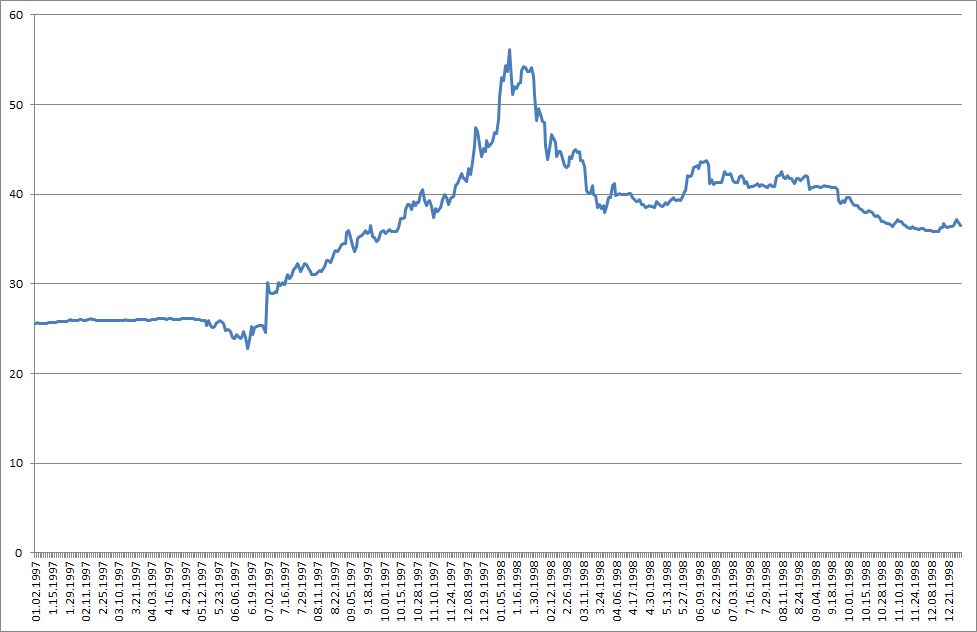
Abb.: Wechselkurse Baht pro US-$, Januar 1997 bis Dezember 1998
[Datenquelle: Data360.org. -- Zugriff am 2011-12-22]
1998-01-23
Die Tennis-Profispielerin Tamarine Tanasugarn (แทมมารีน ธนสุกาญจน์, 1977 - ) kommt bis zur 4. Runde im Grand Slam Singles im Australian Open.
Abb.: Tamarine Tanasugarn (แทมมารีน ธนสุกาญจน์), 2007
[Bildquelle: pfctdayelise / Wikipedia. -- Creative Commons Lizenz (Namensnennung, share alike)]
"Tamarine Tanasugarn (Thai: แทมมารีน ธนสุกาญจน์ - Aussprache: [tʰæm-maː-riːn tʰaná-sù-gaːn], * 24. Mai 1977 in Los Angeles) ist eine thailändische Tennisspielerin. Karriere
Seit dem Jahr 1994 ist Tanasugarn Profispielerin.
Ihre bislang höchste Weltranglistenposition erreichte sie am 13. Mai 2002 mit Rang 19. Auf der WTA Tour gewann sie am 9. Februar 2003 in Hyderabad gegen Iroda Tulyaganova ihren ersten Einzel-Titel. Der zweite Turniersieg folgte erst im Juni 2008 in ’s-Hertogenbosch, wo sie im Finale Dinara Safina mit 7:5, 6:3 bezwang. Diesen Titel konnte sie 2009 mit einem Sieg über Yanina Wickmayer erfolgreich verteidigen.
Am 17. Oktober 2010 gewann Tanasugarn in Osaka ihren vierten Einzel-Titel auf der WTA Tour. Im Endspiel bezwang sie die Lokalmatadorin Kimiko Date Krumm (クルム 伊達 公子) mit 7:5, 64:7, 6:1.
2011 erreichte sie ihren größten Erfolg bei einem Grand-Slam-Turnier. Im Doppel stand sie an der Seite von Marina Eraković aus Neuseeland, mit der sie 2010 bereits ein WTA-Turnier gewann, im Halbfinale von Wimbledon, wo die beiden der Paarung Sabine Lisicki/Samantha Stosur knapp mit 3:6, 6:4, 6:8 unterlagen."
[Quelle: http://de.wikipedia.org/wiki/Tamarine_Tanasugarn. -- Zugriff am 2011-12-23]
1998-01-31

Die Königin sieht den Film Titanic (1997).
Abb.: Der Sitz, auf dem Ihre Majestät die Königin zu sitzen geruht haben, Chiang Mai (เชียงใหม่), 2008
[Bildquelle: Denis De Mesmaeker. -- http://www.flickr.com/photos/2ni/2483460075/. -- Zugriff am 2012-11-18. -- Creative Commons Lizenz (Namensnennung, keine kommerzielle Nutzung, keine Bearbeitung)]
Abb.: Filmplakat
[Bildquelle: Wikipedia. -- Fair use]
1998-01-12

Die Führer von PULO (Patani United Liberation Organization), New PULO und Bersatu fliehen aus Malaysia nach Syrien, Schweden oder Saudi Arabien. Zu den Flüchtlingen gehören u.a.:
Tunku Bilor Kortor Nilor (PULO-Chef)
Ar-rong Mooreng (ex-Chef von New PULO)
Hadi Muno (Vizechef von New PULO)
Wan Suleiman (Bersatu-Chef)
Abb.: Lage von Malaysia, Syrien, Schweden, Saudi Arabien
[Bildquelle: CIA. -- Public domain]
1998-02
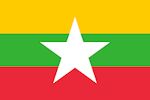
Schließung des Karen-Flüchtlingslagers (ကရင်လူမျိုး, กะเหรี่ยง) in Shoklo, Provinz Tak. Die meisten Flüchtlinge werden nach Mae La (weiter südlich) umgesiedelt.
Abb.: Lage von Mae La
[Bildquelle: http://demoplanet.free.fr/karen_refugee_camps.htm. -- Zugriff am 2012-10-01. -- Fair use]
1998-02

Die staatliche Lotteriebehörde wird der Manipulation beschuldigt, da Wunder-Mönche in den Provinzen Nakhon Sawan (นครสวรรค์) und Nakhon Nayok (นครนายก) ihren Anhängern für zehn aufeinanderfolgende Ziehungen die Gewinnnummern genannt hatten.
Abb.: Lage von Nakhon Sawan (นครสวรรค์) und Nakhon Nayok (นครนายก)
[Bildquelle: CIA. -- Public domain]
1998-02-01
Rojjana "Yui" Phetkanha (รจนา เพชรกันหา, 1976 - ) erhält einen Vertrag über $72.000 als Werbemodel für Chanel. Yui ist ein Bauernmädchen aus der Provinz Ubon Ratchathani (อุบลราชธานี).
Abb.: Lage der Provinz Ubon Ratchathani (อุบลราชธานี)
[Bildquelle: OpenStreetMap. -- Creative Commons Lizenz (Namensnennung, share alike)]
1998-02-16 - 1998-02-21
1998 Fed Cup Asia/Oceania Zone (Frauentennis) in Samut Prakan (สมุทรปราการ)
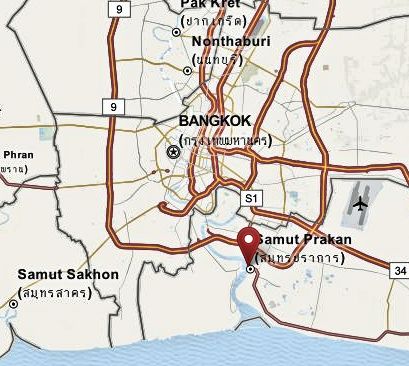
Abb.: Lage von
Samut Prakan (สมุทรปราการ)
[Bildquelle: OpenStreetMap. --
Creative
Commons Lizenz (Namensnennung, share alike)]
1998-02-21
Die Financial Restructuring Authority versteigert 535 PKW, Pick-ups und Transporter aus dem Vermögen von durch die Finanzkrise pleite gegangener Firmen. Unter den Autos sind 30 Mercedes-Benz, 3 BMW und ein Ferrari. 20.000 Besucher interessieren sich für die Autos.
1998-02-24
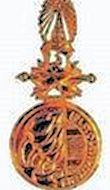
Zu National Artists (ศิลปินแห่งชาติ) werden ernannt:
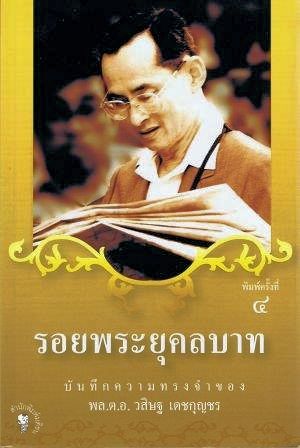
Abb.: Einbandtitel des Buchs
รอยพระยุคลบาท (2001) ("In His Majesty's footsteps : a
personal memoir") von Vasit Dejkunjorn (พลตำรวจเอก วสิษฐ เดชกุญชร
= โก้ บางกอก)
[Fair use]
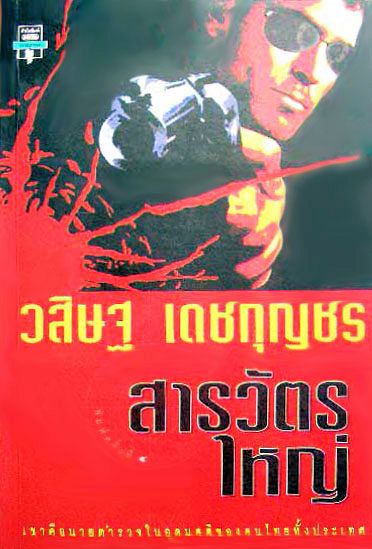
Abb.: Einbandtitel eines weiteren Buchs von
Vasit Dejkunjorn (พลตำรวจเอก วสิษฐ เดชกุญชร
= โก้ บางกอก)
[Fair use]
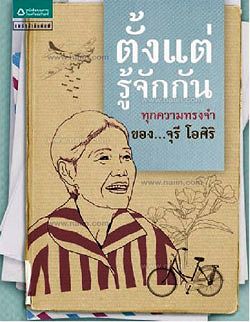
Abb.: Titel eines Buchs von Churee Osiri (นางจุรี โอศิริ
= ป้าจุ๊ = จุ๊)
[Fair
use]
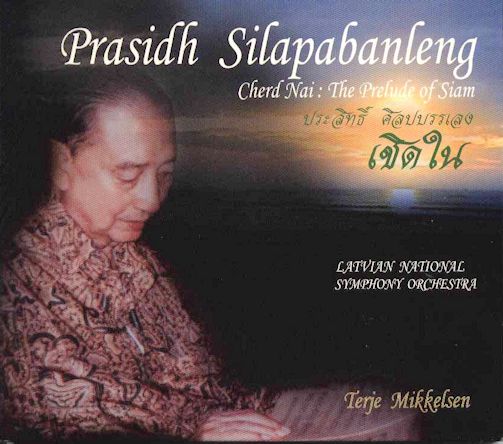
Abb.: CD-Titel von Prasidh Silapabanleng (นายประสิทธิ์ ศิลปบรรเลง)
[Fair use]
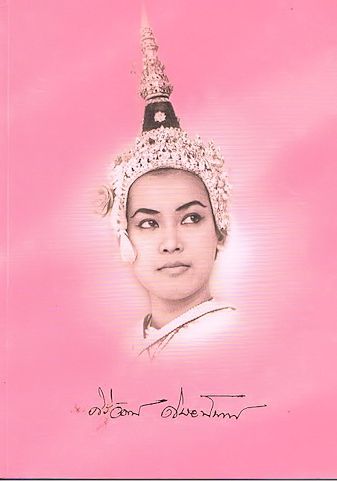
Abb.: Einbandtitel eines Buchs über Siriwat Ditsayanand (นางศิริวัฒน์ ดิษยนันทน์)
[Fair use]
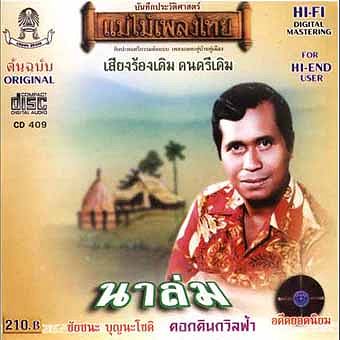
Abb.: CD-Titel von Chaichana Boonnachot (นายชัยชนะ
บุญนะโชติ)
[Fair use]
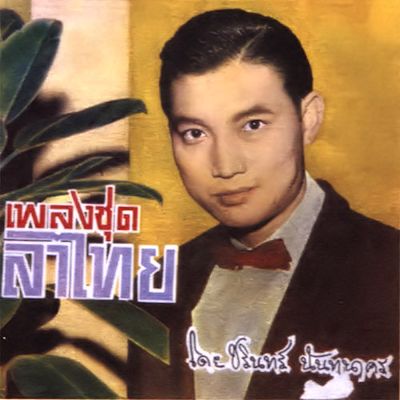
Abb.: CD-Titel von Charin Nandanagara (นายชรินทร์ นันทนาคร
= ชรินทร์ งามเมือง)
[Fair use]
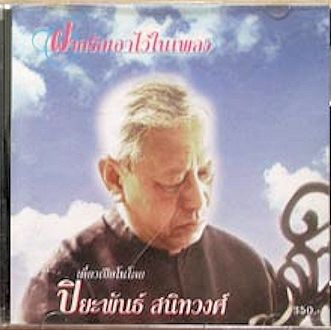
Abb.: CD-Titel von Piyaphan Snitwongse (นาวาตรี
ปิยะพันธ์ สนิทวงศ์ ณ อยุธยา)
[Fair use]
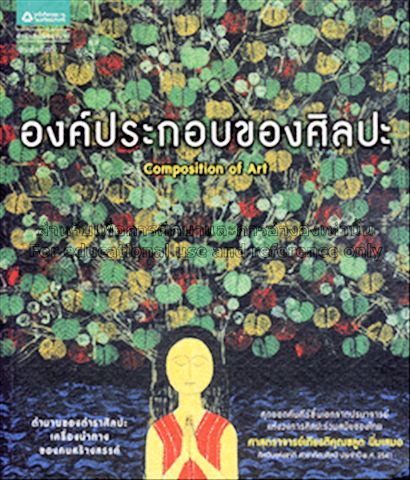
Abb.: Einbandtitel eines Buchs von Chalood Nimsamer
(นายชลูด นิ่มเสมอ)
[Fair
use for education and reference]
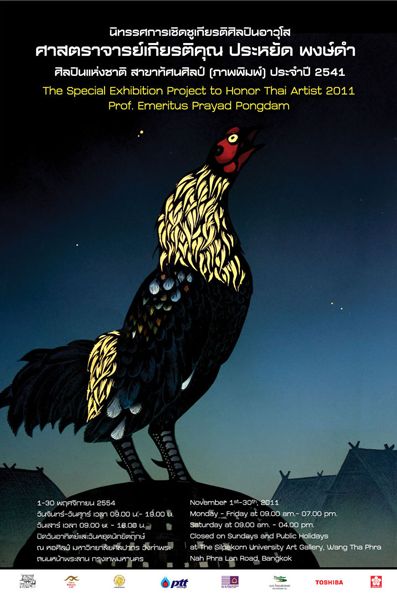
Abb.: Plakat einer Ausstellung von Prayat Pongdam (ศ.
ประหยัด พงษ์ด)
[Fair use]
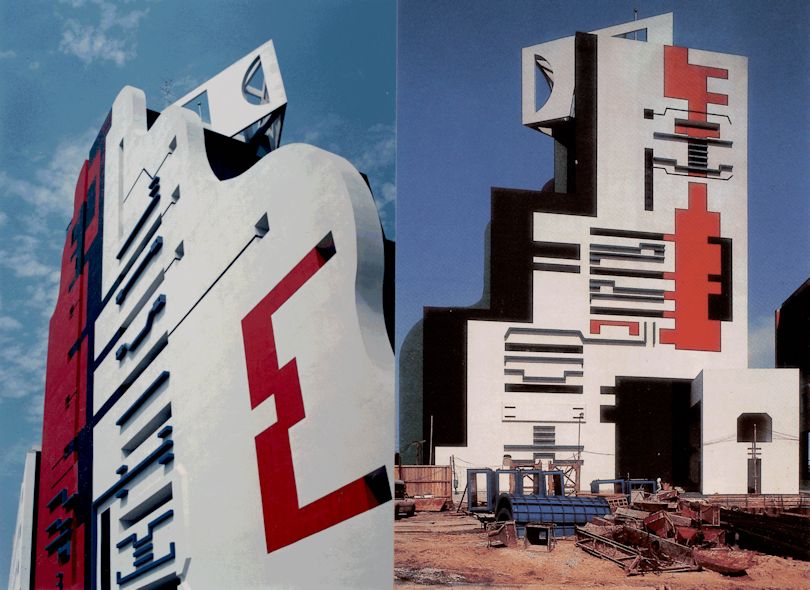
Abb.: Nation Building, Bangkok, von Sumeth Jumsai Na Ayudhaya (ดร.
สุเมธ ชุมสาย ณ อยุธยา),
1991
[Bildquelle: Sumet jumsai / Wikipedia. --
Creative Commons
Lizenz (Namensnennung, share alike)]
1998-02-24
Der Transvestit und Muang-Thai-Boxer Parinya Kiatbusaba bricht im Lumpini Stadium (สนามมวยเวทีลุมพินี) in Tränen aus, da er/sie gemäß den Regeln seinen/ihren Oberkörper entblößen sollte. "Diese Regel ist inakzeptabel. Wie kann ich in der Öffentlichkeit strippen."
Abb.: Lage des Lumpini Stadium (สนามมวยเวทีลุมพินี)
[Bildquelle: OpenStreetMap. -- Creative Commons Lizenz (Namensnennung, share alike)]
Abb.: Plakat
[Bildquelle: Wikipedia. -- Fair use]
"Parinya Kiatbusaba (ปริญญา เกียรติบุษบา) or Parinya Jaroenphon (ปริญญา เจริญผล, born June 9, 1981), more popularly known as Nong Thoom, Nong Toom or Nong Tum (Thai: น้องตุ้ม ปริญญา เจริญผล), is arguably the best-known kathoey (กะเทย) in Thailand. She is a former Muay Thai (มวยไทย, Thai boxing) champion and has also worked as a model and actress. Early Life
As a child, she was already aware of her female gender-identity. After a short period as a Buddhist monk, she started to train as a boxer, and eventually joined a boxing camp in Chonburi (ชลบุรี). Her goal was to make enough money to support her poor parents and to pay for a sex-change operation.
Career and Current ProjectsHer public life began in February 1998, with a victory in Bangkok's Lumpini Boxing Stadium (สนามมวยเวทีลุมพินี), the center of the Muay Thai world. The Thai media were understandably intrigued by the novelty and incongruity of a make-up wearing 16-year-old kathoey, or "lady boy", defeating and then kissing a larger, more muscular opponent.
Although the Thai government had previously blocked kathoey athletes from participating in the national volleyball team for fear of negative reaction from the rest of the world, the Muay Thai establishment embraced Nong Toom, and tourism officials promoted her as "indicative of the wonders to be found" in Thailand. Perhaps not coincidentally, Muay Thai had been in a several-year slump at the time, and Nong Toom had greatly revitalized both media and public interest in the sport, as shown by increased ticket sales and stadium revenue.
She was profiled in several magazines, and appeared in many Thai music videos. Subsequently, her public profile began to fade, but her bouts with a foreigner, as well as her trip to Japan to fight a Japanese challenger, kept her face in the news. By fall of 1998, there was little coverage of Nong Toom to be found in either the mainstream or boxing media.
In 1999, Nong Toom caused considerable publicity by announcing her retirement from kick boxing, her intention to become a singer, and her plan to undergo sex reassignment surgery. She was initially turned down by some of the Bangkok surgeons she turned to, but was able to undergo the sex-change surgery in 1999 at Yanhee International Hospital (โรงพยาบาลยันฮี).
On February 26, 2006, Nong Tum made a comeback as boxer. She fought an exhibition match for Fairtex Gym's new Pattaya branch, re-dubbed Nong Toom Fairtex Gym, by fighting a 140-pound contest against Japan's Kenshiro Lookchaomaekhemthong. Nong Toom won by unanimous decision after the three-round fight, leaving her rival with a cut near his eye from an elbow in the last round.
Nong Toom was planning another exhibition bout for sometime in 2006 with a female boxer Lucia Rijker, who portrayed the lethal "Blue Bear" in the film Million Dollar Baby.
On May 31, 2008 Nong Toom had a fight against Pernilla Johansson at Rumble of the Kings in Stockholm, Sweden and won by decision.
In 2010, Nong Toom will open a boxing camp "Parinya Muay Thai" in Pranburi (ปราณบุรี), Thailand which she will co-own and run with American actor/writer Steven Khan. She currently teaches muay thai and aerobics to children at the Baan Poo Yai School.
Movie and Other Media AppearancesHer story is related in the 2003 film Beautiful Boxer (บิวตี้ฟูล บ๊อกเซอร์)in which she was portrayed by male kickboxer Asanee Suwan. The film won several national and international awards, yet opened to limited success in Thailand. She came to United States theatres in 2005. The film's director, Ekachai Uekorngtham (เอกชัย เอื้อครองธรรม), also wrote the solo performance Boxing Cabaret for Nong Toom which she performed in the summer of 2005 at the Singapore Arts Festival and later in Bangkok.
Nong Toom's life as a ladyboy is also part of the book Ladyboys: The Secret World of Thailand's Third Gender by Maverick House Publishers.
Her story was also included in Julina Khusaini's National Geographic documentary Hidden Genders (2003).
She had a prominent role in the 2006 superhero film-action film Mercury Man (มนุษย์เหล็กไหล), playing the title character's transgendered sibling and demonstrating her kickboxing prowess on the villains. In 2006, she appeared as a guest star on SBS television series "World Record Pizza" and Rallarsving (Sweden)."
[Quelle: http://en.wikipedia.org/wiki/Parinya_Charoenphol. -- Zugriff am 2011-12-23]
1998-02-24 - 2001-03-27
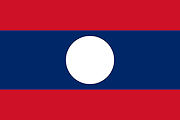
Sisavath Keobounphanh (ສີສະຫວາດ ແກ້ວບຸນພັນ, 1928 - ) ist Ministerpräsident von Laos
1998-03 - 1998-04
Die Zeitung Thai rath ( ไทยรัฐ) entfacht ein Lotteriefieber, da sie in einer Serie von Artikeln behauptet, dass der Geist der verstorbenen Luk Thung (ลูกทุ่ง) Sängerin Pumpuang Duangjan (พุ่มพวง ดวงจันทร์, 1961 - 1992), in ihrem Tempel (Wat Thap Kradan - วัดทับกระดาน) Gewinnnummern der Lotterie vorhersagt. Leute, die (angeblich) Erfolg hatten aufgrund Pumpuangs Geist, spenden dem Tempel Goldschmuck im Wert von über 500.000 Baht. An guten Tagen nimmt der Tempel über 300.000 Baht in den Opferstöcken ein. Von Juni 1997 bis Juli 1998 erhält der Tempel über 18 Millionen Baht an Spenden.
Im August 1998 kauft der Tempel sechs Rai Land für die Erweiterung. Die Kosten von 500.000 Baht deckt man mit dem Verkauf von goldenen Halskettchen. 950.000 Baht gibt man für elektrische Einrichtungen aus, 500.000 Baht legt man bei einer Bank an.
Abb.: Lage von Wat Thap Kradan - วัดทับกระดาน
[Bildquelle: OpenStreetMap. -- Creative Commons Lizenz (Namensnennung, share alike)]
1998-03

Birmanische Regierungstruppen und Soldaten der Democratic Karen Buddhist Army (DKBA, တိုးတက်သော ဗုဒ္ဓဘာသာ ကရင်အမျိုးသား တပ်ဖွဲ့) greifen Huay Kaloke (ห้วยกะโหลก), ein Flüchtlingslager für Karen (ကရင်လူမျိုး, กะเหรี่ยง) in der Provinz Tak (ตาก) an.
1998-03-06

Von einer Baustelle in der Sukhumvit Road (ถนน สุขุมวิท) der Italian-Thai Development PLC (บมจ. อิตาเลียนไทย ดีเวล๊อปเมนต์) für BTS SkyTrain (รถไฟฟ้าบีทีเอส) fallen zwei 30 Meter lange Stahlträger auf die Straße und töten einen Taxifahrer und verletzen fünf weitere Personen. Die Stadtverwaltung Bangkoks droht, die Firma zu verbieten. Schon im Vorjahr war ein Arbeiter schwer verletzt worden, weil Sicherheitsbestimmungen nicht eingehalten wurden.
1998-03-06

Die Polizei verhaftet Sulak Sivaraksa (ลักษณ์ ศิวรักษ์, 1933 - ) und über 40 weitere Personen, die im Huai Kha Kheng Wildlife Sanctuary (ห้วยขาแข้ง) gegen das Yadana-Erdgas-Pipeline-Projekt prostetieren (siehe zum 1997-04-05).
Abb.: Lage des Huai Kha Kheng Wildlife Sanctuary (ห้วยขาแข้ง)
[Bildquelle: OpenStreetMap. -- Creative Commons Lizenz (Namensnennung, share alike)]
Abb.: Huai Kha Kheng Wildlife Sanctuary (ห้วยขาแข้ง)
[Bildquelle: ©Google earth. -- Zugriff am 2012-02-16]
"Das Naturschutzgebiet Huai Kha Khaeng (Thai: เขตรักษาพันธุ์ สัตว์ป่า ห้วยขาแข้ง, Aussprache: [kʰèt rák-săː pʰan-sàt-pàː hûay-kʰăː-kʰæ̂ng]) ist ein Naturschutzgebiet in den Provinzen (Changwat) Kanchanaburi (กาญจนบุรี), Tak (ตาก) und Uthai Thani (อุทัยธานี) in Nord-Thailand. Es wurde 1991 in die Liste des Weltkulturerbes der UNESCO aufgenommen. Lage
Das Naturschutzgebiet Huai Kha Khaeng liegt im Tenasserim-Gebirge (ภูเขาตะนาวศรี) an der westlichen Staatsgrenze von Thailand zu Myanmar, am südlichen Ende der Berghöhen von Dao Na.
Mit dem angrenzenden aber getrennt verwalteten Naturschutzgebiet Thung Yai Naresuan (เขตรักษาพันธุ์สัตว์ป่า ทุ่งใหญ่นเรศวร) ist es eines der größten Schutzgebiete Südostasiens. Zusammen mit weiteren Schutzgebieten bilden die beiden Reservate den Western Forest Complex, die größte zusammenhängende geschützte Fläche des südostasiatischen Festlands.
TopographieDie heute ausgewiesene Fläche des Naturschutzgebiets beträgt 257.464 Hektar, nachdem es 1986 erweitert worden war.
Das Gelände ist allgemein hügelig und weist ganzjährige und jahreszeitliche Gewässer auf. Die Höhe reicht von 250 Metern bis 1.678 Metern.
Fauna und FloraDas Naturschutzgebiet ist hauptsächlich von Wäldern bedeckt, die Berghänge weisen immergrünen Regenwald oder immergrünen Trockenwald auf. In den Feuchtgebieten und entlang der Wasserläufe gibt es auch immergrünen Galeriewald mit zahlreichen Arten an Kletterpflanzen und Epiphyten. Auch sind die in Südostasien seltenen Flügelfruchtgewächse hier zu finden.
Die Größe des Naturschutzgebiets, das ja in die benachbarten Gebiete Thung Yai Naresuan und ins Naturschutzgebiet Umphang (เขตรักษา พันธุ์สัตว์ป่า อุ้มผาง) übergeht, führt dazu, dass eine ganze Reihe größerer Säugetierarten, die im übrigen Thailand bereits selten oder ganz verschwunden sind, hier noch vorkommen. Zu den bedrohten Arten des Schutzgebietes zählen der Indochinesische Tiger, der im Nationalparkkomplex in seiner weltweit größten Population vorkommt. Hier und in den umliegenden Schutzgebieten leben etwa 154 Tiger.[1] Weitere bedrohte Arten sind Leoparden (die schwarze Form ist hier etwa so häufig wie die gefleckte), Nebelparder, Asiatische Wildhunde, Schabrackentapire, Sumatranashörner, Asiatische Elefanten (etwa 150-200 Tiere), Gaure, Bantengs, Tenasserim-Muntjaks, Schweinshirsche (selten) und der Sumatra-Serau. Darüber hinaus kommen etwa 24-40 Wilde Wasserbüffel, die einzige Population Thailands, vor. Allerdings bestehen Zweifel an der Reinrassigkeit dieser Tiere, da sie sich möglicherweise mit Hauswasserbüffeln vermischt haben. Seit 1965 unbestätigt ist das Vorkommen des Siamesischen Leierhirsches, als noch zwei dieser Tiere geschossen wurden. Mindestens zwei Otter-Arten wurden nachgewiesen, der Zwergotter und der Weichfellotter. Im Reservat finden sich alle fünf in Thailand vorkommenden Makakenarten, der Rhesusaffe, der Javaneraffe, der Nördliche Schweinsaffe, der Assam-Makak und der Bärenmakak. Zu den weiteren Affenarten des Gebietes zählen Silberne Haubenlanguren, Phayre-Brillenlanguren und Weißhandgibbons.
Zahlreiche Vogelarten wurden bisher nachgewiesen, unter ihnen auch seltene Arten, wie der Ährenträgerpfau, der Kahlkopfgeier und der Kalij-Fasan. Unter den Reptilien will vor allem der stattliche Bengalenwaran genannt sein.
Insgesamt führt der UNESCO-Bericht 120 Säugetier-, 400 Vogel-, 96 Reptilien-, 43 Amphibien- und 113 Süßwasserfischarten auf.
KlimaDas Klima ist tropisch-monsunal bis semi-tropisch. Die Regenzeit beginnt im Mai oder Juni und dauert bis in den Oktober. Anschließend ist es trocken und relativ kühl, um dann im März bis zum Mai sehr heiß zu werden.
Die durchschnittliche jährliche Regenmenge liegt im Westen bei 2.000 bis 2.400 mm, im Osten etwas geringer (1.600 bis 2.000 mm). Etwa 80 % der Jahresregenmenge wird durch den ausgeprägten Südwest-Monsun gebracht.
Die durchschnittlichen Temperaturen sind:
Jahreszeit Minimum Maximum Regenzeit 20 °C 33 °C kühl 10 °C 29 °C heiß 15 °C 35 °CDie absoluten Temperaturen liegen zwischen 7 und 40 °C.
GeschichteHuai Kha Khaeng wurde am 26. August 1972 zusammen mit dem benachbarten Thung Yai Naresuan als Naturschutzgebiet ausgewiesen. 1991 erfolgte dann die Eintragung in die Liste des Weltnaturerbes der Menschheit.
Sporadischen Funden nach zu schließen ist die Gegend bereits seit dem Pleistozän besiedelt, doch steht eine genaue Erforschung noch aus. Heute leben hier einige Angehörige der Bergvölker Thailands (hier Hmong - ชาวม้ง, und Karen - กะเหรี่ยง), die meisten sind bereits in die Provinz Tak (ตาก) umgesiedelt worden."
[Quelle: http://de.wikipedia.org/wiki/Naturschutzgebiet_Huai_Kha_Khaeng. -- Zugriff am 2011-12-23]
1998-03-11

Offizieller Besuch von Ministerpräsident Chuan in den USA. Man diskutiert Maßnahmen, wie Thailand die Finanzkrise überwinden kann. US-Präsident Clinton sagt $1,7 Mio. Hilfe zu.
1998-03-17

Der chinesische Volkskongress wählt Zhu Rongji ( 朱镕基, 1928 - ) zum Ministerpräsidenten.
Abb.: Zhu Rongji ( 朱镕基), 1986
[Bildquelle: World Economic Forum. -- http://www.flickr.com/photos/worldeconomicforum/5968998301/. -- Zugriff am 2011-12-19. -- Creative Commons Lizenz (Namensnennung, share alike)]

Zhou Rongji ( 朱镕基) wendet das Interesse Chinas vom Zugang zum birmanischen Golf von Martaban (မုတ္တမပင်လယ်ကွေ့) weg auf Thailand. Es hatte sich gezeigt, dass der Ausbau eines Zugangs zum Meer über das Salween-Flußgebiet (သံလွင်မြစ်) viel schwieriger ist als ein Zugang über Thailand.
Abb.: Verlauf des Salween (怒江 / သံလွင်မြစ်)
[Bildquelle: CIA. -- Public domain]
1998-03-17
Bill Gates (1955 - ), Gründer von Microsoft, veröffentlicht in der Bangkok Post eine Botschaft an Thailand, in der er vor den Gefahren der Regulierung des Internets warnt.
Abb.: Bill Gates, 1998
[Bildquelle: USGOV-DOJ / Wikipedia. -- Public domain]
1998-03-21

Es erscheint
Litvin, Daniel: Dirt poor. -- In: The Economist <London>. -- 1998-03-21
Danach ist der durchschnittliche Bleiwert im Blut von Bangkokern 400 Mikrogramm (µg) pro Liter. Der WHO-Grenzwert ist 250 µg/l (1,21 µmol/l)
1998-03-24
Große Waldbrände wüten drei Tage am Doi Inthanon (ดอยอินทนนท์). Wegen des starken Rauchs müssen alle Flüge von Chiang Mai (เชียงใหม่) nach Mae Hong Son (แม่ฮ่องสอน) gestrichen werden. Hunderte Freiwilliger versuchen, die Feuer zu löschen.
Abb.: Lage des Doi Inthanon (ดอยอินทนนท์)
[Bildquelle: OpenStreetMap. -- Creative Commons Lizenz (Namensnennung, share alike)]
Abb.: Doi Inthanon (ดอยอินทนนท์)
[Bildquelle: ©Google earth. -- Zugriff am 2012-02-16]
1998-03-27

Die US Food and Drug Administration lässt Sidenafil (Markenname ®Viagra) zur Behandlung der erektilen Dysfunktion (Erektionsstörung) beim Mann, also als Potenzmittel, zu. Viagra wird eine große Rolle spielen bei Ausländern im Rentenalter, die in Thailand mit käuflichen Frauen ihren Urlaub bzw. Lebensabend verbringen.
Abb.: Angebot eines Straßenhändlers an Potenzmitteln, Bangkok, 2010
[Bildquelle: ADwarf / Wikimedia. -- Public domain]
1998-03-29
Erstmals Amazing Miss Tiffany Contest (Miss Tiffany's Universe), ein Schönheitswettbewerb für Transgender im Travestie-Kabarett Miss Tiffany in Pattaya (พัทยา). Am gleichen Tag findet die Wahl der (weiblichen) Miss Thailand statt.
Abb.: Zweitplazierte Miss Tiffany's Universe, 2007
[Bildquelle: 阿樹. -- http://www.flickr.com/photos/95215349@N00/849858027/. -- Zugriff am 2013-01-28. -- Creative Commons Lizenz (Namensnennung, keine kommerzielle Nutzung, keine Bearbeitung)]
1998-04-08

Ein angeblicher Zahn Buddhas macht in Bangkok Zwischenstopp auf seiner Reise von Indien nach Taiwan. Ca. 10.000 Thais erweisen dem Zahn die Ehre. Mönche aus Tibet, Thailand und Taiwan rezitieren vor der Reliquie.
1998-04-17
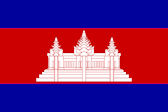
Nach dem Tod des Massenmörders Pol Pot (ប៉ុល ពត, geb. 1925) am 17. April sagt Ministerpräsident Chuan, dass seine Regierung kooperieren werde, um die übrigen Anführer der Roten Khmer (ខ្មែរក្រហម) wegen Genozids vor Gericht zu bringen. Anführer der Roten Khmer, die sich in Thailand aufhalten würden verhaftet und wegen illegalen Grenzübertritts angeklagt.
1998-04-30
Bericht der Nukul (นุกูล) Commission zu den Ursachen der Finanzkrise 1997. Hauptschuldig ist nach Ansicht der Kommission die Zentralbank (Bank of Thailand - ธนาคารแห่งประเทศไทย), die den Baht nicht gegen Angriffe von Spekulanten verteidigt hat. Als Schuldige werden u. a. namentlich genannt:
Rerngchai Marakanond (เริงชัย มะระกานนท์, 1942 - ), ehemaliger Gouverneur der Bank of Thailand (ธนาคารแห่งประเทศไทย)
Amnuay Viravan (อำนวย วีรวรรณ, 1932 - ), ehemaliger Finanzminister
1998-05-04
Um seiner Entlassung zuvorzukommen, tritt der Gouverneur der Bank of Thailand (ธนาคารแห่งประเทศไทย), Chaiyawat Wibulswasdi (นายชัยวัฒน์ วิบูลย์สวัสดิ์, 1946 - ), zurück. Er wird beschuldigt, die ausländischen Währungsreserven Thailands verbraucht zu haben im vergeblichen Versuch, die Spekulation gegen den Baht abzuwehren.
Abb.: Chaiyawat Wibulswasdi (นายชัยวัฒน์ วิบูลย์สวัสดิ์)
[Bildquelle: th.Wikipedia. -- Fair use]
1998-05
Frau Professor Chalidaporn Songsamphan (ชลิดาภรณ์ ส่งสัมพันธ์) in einem Interview:
"In an interview in May 1998, Chalidaporn Songsamphan [ชลิดาภรณ์ ส่งสัมพันธ์], a professor of political science at Thammasat University, commented on the many statements that Thai society is open toward homosexuality: "I have had this discussion with many .people. They say that Thai society is more open toward this issue, but I totally disagree. In this society we don’t beat up homosexuals or openly say bad things about them; we just ignore them. This is a kind of violence to trivialize. This is not a positive attitude toward homosexuality" (English used)
[...]
In the same interview, Chalidaporn commented on these presentist assumptions about gender/sexuality and national image:
"This is a very strange thing about attitudes in Thai society. Attitudes [about sex] have been influenced by Victorian thinking about sex, but people tend to believe that this is Thai. I think that this kind of Victorian thinking came with Westerners who came into [Thai] society about one hundred years ago, in the reign of Rama V. We had reform in this society, and we just adopted this sort of thinking, and we think it is Thai and that it has been Thai for so long. There is another issue about short skirts at Chulalongkorn. People said that Thais usually dress properly, and we don’t show this part of our bodies. But this is not true. In the Ayuthayan times women wore just a sash over their breasts. The way we believe Thai women should behave is actually very Western" (English used).
[Zitiert in: Sinnott, Megan J.: Toms and dees : transgender identity and female same-sex relationships in Thailand. -- Honolulu : University of Hawaii Pr., 2004. -- 261 S. : Ill. ; 24 cm. -- ISBN 0824828526. -- Zugl. Diss., Univ. of Wisconsin - Madison, 2002. -- S. 192f.]
1998-05
Das Public Relations Department kündigt Einschränkungen für das Zeigen von Kathoey (กะเทย, Transgender) in Fernsehprogrammen an. Ministerpräsident Chuan hatte entsprechende Beschwerden erhalten.
1998-05-06

In London stirbt der frühere Ministerpräsident Chatichai Choonhavan (ชาติชาย ชุณหะวัณ, geb. 1920).
Abb.: Lage von London (UK)
[Bildquelle: OpenStreetMap. -- Creative Commons Lizenz (Namensnennung, share alike)]
Abb.: "His Royal Highness Crown Prince Maha Vajiralongkorn [สมเด็จพระบรมโอรสาธิราช เจ้าฟ้ามหาวชิราลงกรณฯ สยามมกุฎราชกุมาร] granting an audience, at the King's Own Body Guards Regiment, to His Excellency General Chatichai Choonhavan [ชาติชาย ชุณหะวัณ], the Prime Minister, and presenting him with money and accessories to be donated to the victims of Typhoon "" Gay "" in the South."
[Bildquelle: http://61.19.244.251/documents/BB2550904/pic/T0011_0004_01.jpg. -- Zugriff am 2011-12-23. -- Fair use]
1998-05-11

Joseph "Erap" Ejercito Estrada (geborener Jose Marcelo Ejercito, 1937 - ) wird Präsident der Philippinen.
Abb.: Lage der Philippinen
[Bildquelle: OpenStreetMap. -- Creative Commons Lizenz (Namensnennung, share alike)]
Abb.: Joseph "Erap" Ejercito Estrada, 1998
[Bildquelle: Helene C. Stikkel / USDoD / Wikimedia. -- Public domain]
1998-05-14/15
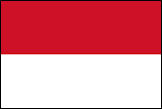
Schwere Ausschreitungen in vielen Städten Indonesiens, vor allem Plünderungen von Geschäften von Chinesen, Vergewaltigungen chinesischer Frauen (468 vergewaltigte Frauen, davon in Jakarta 168).
1998-05-21

Der indonesische Präsident Suharto (1921 - 2008) muss zurücktreten. Das Volk jubelt. Nachfolger wird Bacharuddin Jusuf Habibie (1936 - ).
Abb.: Indonesien
[Bildquelle: CIA. -- Public domain]
Abb.: Präsident Suharto im Kreise seiner Familie, ca. 1967
[Bildquelle: Wikipedia. -- Public domain]
Abb.: Bacharuddin Jusuf Habibie im Kreise seiner Familie, 1998
[Bildquelle: Office of the Vice President of The Republic of Indonesia / Wikimedia. -- Public domain]
1998-05-27 - 1998-05-30
Guinness Buch der Rekorde: Längster Laufsteg. In Bangkok schreiten 111 Models über einen 1,111 km langen langen, 1,8 m hohen Laufsteg vor dem Seacon Square (ซีคอนสแควร์) Einkaufszentrum. Aus der Luft gesehen stellt der Laufsteg das Logo "Lux" des Sponsors Unilever dar.
Abb.: Lage des Seacon Square (ซีคอนสแควร์)
[Bildquelle: OpenStreetMap. -- Creative Commons Lizenz (Namensnennung, share alike)]
1998-05-28

Abb.: Sanitsuda Ekachai (สนิทสุดา เอกชัย)
[Bildquelle: FAO]Bangkok Post: Sanitsuda Ekachai (สนิทสุดา เอกชัย, 1955 - ): "It's about time someone stood up"
Kommentar zum Wucher mit Kremationsgebühren von Wat Lat Phrao (วัดลาดพร้าว); Bangkok. Suda Pannarak hatte den Mut, diese Ausbeutung aufzudecken.
"Kudos to Suda Pannark, whose courage in standing up to Wat Lat Phrao’s, Bangkok, commercialism exposed our temples’ fervent and heartless exploitation of the dead. Her outcry immediately struck a chord with others who are frustrated with temple vultures.
Wat Lat Phrao charges a cut-throat rental fee on funeral pavilions and crematoriums. The temple also forces clients to buy its funeral packages, from the coffin through to flower arrangements, food and ceremonial offerings. If not, go elsewhere.
Its commercialism is legendary. It’s common to see two coffins in the same pavilion because the temple forces grief- stricken families to buy its coffin even if they already have one. Slum dwellers nearby also complain they get midday cremations while wealthy customers get the more convenient time of after work.
Suda, a small fruit vendor, first grinned and bore it. She said yes to everything including holding the ceremony for her late father in a tent instead of a proper pavilion after being told they all had been "reserved". The last straw came when her father’s ceremony was ruined by rain. Still the temple refused to give a proper pavilion, even though one was empty despite the reservation claim.
When Suda took the matter to the media, her anger immediately caught on because this ugly business of overcharging and giving preference to rich customers is a widespread temple practice.
Although tired of the rip-off, families dare not make a noise for fear of revenge in the form of "inconveniences" which would upset their last respects for the deceased. Also at play are our traditional reverence of holy robes and the consumer- ist culture which makes us see temples as rites-performing companies with different products and price ranges."
[Sanitsuda Ekachai (สนิทสุดา เอกชัย) <1955 - >: Keeping the faith : Thai Buddhism at the crossroads. -- Bangkok : Post Books, 2001. -- 322 S. : Ill. ; 23 cm. -- ISBN 974-228-016-9. -- S. 307]
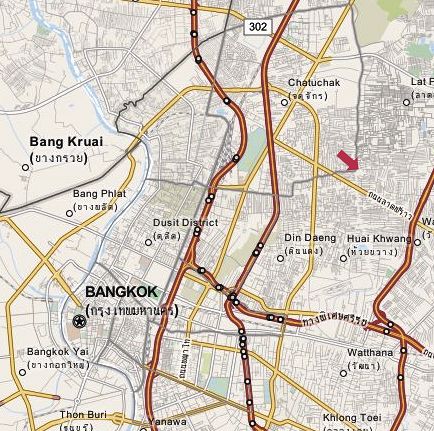
Abb.: Lage von Wat Lat Phrao (วัดลาดพร้าว)
[Bildquelle: OpenStreetMap. --
Creative
Commons Lizenz (Namensnennung, share alike)]
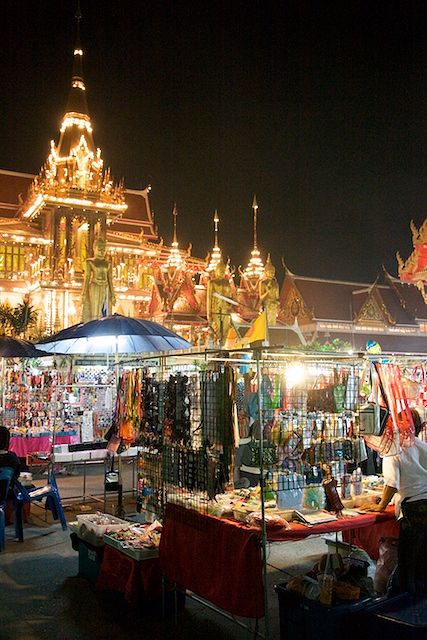
Abb.: Wat Lat Phrao (วัดลาดพร้าว), 2009
[Bildquelle: nachomaans. --
http://www.flickr.com/photos/nachomaans_th/3278157697/. -- Zugriff am
2012-09-28. --
Creative Commons Lizenz (Namensnennung, keine kommerzielle Nutzung, share
alike)]
1998-06
Es erscheint:
Kritaya Archavanitkul [กฤตยา อาชาวินจุกล]: Combating the Trafficking in Children and their Exploitation in Prostitution and Other Intolerable Forms of Child Labour in Mekong Basin Countries. -- Online: http://www.seameo.org/vl/combat/. -- Zugriff am 2016-02-29
Abb.: Wege des Kinderhandels"Trafficking of girls into prostitution is a comparatively new phenomena in some countries in the subregion. Evidence suggests that before 1970, this practice did not exist in Yunnan [云南], Laos, Cambodia and Myanmar.
Until now in Myanmar and Laos, little is known about commercial sex sector and a number of sex workers. Only indirect sources of data can be used to indicate a number of prostitutes in some areas in the two countries.
For example, according to an interview with staff of an international NGO in Yangon[ရန်ကုန်], it is estimated that, the number of sex workers and sex establishments in Tachilek [တာချီလိတ်], a Myanmar-Thailand border province, is 200 persons and 30 places. The World Health Organization estimated that in 1994, 400,000 people were HIV infected in Myanmar, hence it is believed that numbers of domestic prostitutes and intravenous drug users have increased substantially in Myanmar (NCGUB 1996).
In Laos, unpublished data from the National AIDS Committee of Laos reflected a number of about 2,000 bar workers in Vientiane [ວຽງຈັນ].
Abb.: Lage von Tachilek [တာချီလိတ်] und Vientiane [ວຽງຈັນ]
[Bildquelle: OpenStreetMap. -- Creative Commons Lizenz (Namensnennung, share alike)]Previously, the Governments of Myanmar and Laos seemed to deny that women and children trafficking was a problem of their countries. The authorities in Myanmar also renounce the realities of a trafficking problem across borders in Myanmar as implied by an official acknowledgment of only 243 children and women trafficking from Myanmar to other countries, among whom 95 were officially repatriated by the Thai authorities in 1993 (Union of Myanmar 1997). In the very recent regional workshop on transnational migration in ASEAN countries in May 1998, Myanmar is considered a receiving country in the region according to the statements made by the Burmese delegates (IPSR 1998). The presence of several hundred thousands of migrants from Myanmar in Thailand with a large number currently engaging in prostitution, is also denied in the meeting. This is probably due to the fact that a majority of trafficked children and women from Myanmar into sex trade in Thailand were ethnic minorities, and about 30 per cent were ethnic Burmans (Archvanitkul and Koetsawang 1997).
This is unlike the case of Lao PDR that a problem of cross-border trafficking is officially acknowledged, especially with regard to an increasing number of young girls under 15 years of age being lured into prostitution in Thailand (Lao PDR 1997).
In Yunnan Province [云南], trafficking children into prostitution first began in the early 1980s. At the beginning, the trafficking took place mostly in the remote mountainous areas where the local people lived under utter poverty status. Because of the great need for women in the interior parts, which resulted from the shortage of young women according to the one-child family policy, young women and girls were tricked into marriage. Endless complaints from families losing their wives and children were reported to the Women'sWomen's Federations. After being trafficked, not all of them got married with those from the receiving regions as they agreed to be, as some were forced into prostitution simply because there was no other alternative. From the late 1980s to the early 1990s, the trafficking in women and children surged to its peak.A follow-up study on the case of Yunnan's women repatriated from Thailand suggested that around 1,500 women from Yunnan were trafficked into sex business in Thailand, but an officer in Yunnan gave a number of 3,000 women missing from Yunnan in 1991 alone (Mahathanobon 1996). The Yunnan country study stresses that trafficking seems lo be disappearing in the recent years. Less complaints are currently being filed to the Public Security Departments and the Women's Federations at various governmental levels, and not even heard of in those areas which used to suffer a lot from the trafficking, people talk more about voluntary migration, instead of being forced.
Abb.: Lage von Yunnan [云南]
[Bildquelle: OpenStreetMap. -- Creative Commons Lizenz (Namensnennung, share alike)]Different sources of data showed different proportions and numbers of child prostitutes in Vietnam and Cambodia.
According to General Statistical Office of Vietnam, there were 200,000 prostitutes in the country with 10.5 per cent child prostitutes. The statistical Office in Ho Chi Minh City [Thành phố Hồ Chí Minh]pointed out an increasing trend of child prostitutes from 5.2 per cent in 1990 to 20.8 per cent in 1995. Another source, however, showed that the proportion risen up from 10 per cent in 1990 to 15 per cent in 1997, and the number of child victims was approximately 20,000 (UNICEF 1997).
Abb.: Lage von Ho Chi Minh City [Thành phố Hồ Chí Minh]
[Bildquelle: OpenStreetMap. -- Creative Commons Lizenz (Namensnennung, share alike)]In Cambodia, a few recent surveys conducted in 1996 revealed differences in the total number of prostitutes throughout the country, ranging from 15,000 to 80,000, with between 15-30 per cent being child prostitutes. During the presence of UNTAC (the United Nations Transitional Authority in Cambodia) in 1992, around 20,000 prostitutes worked in Phnom Penh. The latest estimate puts the number of sex workers in Phnom Penh between 7,000-15,000. It is widely agreed that the age of sex workers in Cambodia has noticeably decreased in the last few years, and sex workers under 13 years old are not uncommon (Kim Sean and Barr 1997).
The majority of cross-border trafficked cases in Vietnam were transported to Cambodia. For instance, in 'Spray Park', one red light area in Phnom Penh [ភ្នំពេញ], a number of Vietnamese women in each of 50 Brothels varied from 17 to 50. On average, there were around 1,000 Vietnamese prostitutes in this area. Their age ranged from 13 to 22 years old. Some of them were sold, and some were willing to work. In this report, the author estimated that there were about 3,000 Vietnamese prostitutes in Phnom Penh (Huynh Kiem Tien, 1997). But UNICEF (1997) reported the total number of 6,000 Vietnamese prostitutes in Cambodia. A recent survey covering 22 provinces and 64 districts conducted by the Human Right and the Receiving Complaints Committee indicated a number of 14,725 prostitutes in the survey areas with 15.5 per cent children aged 9-15. Among the 2,291 child prostitutes, 78 per cent were Vietnamese and 22 per cent were Cambodian (Center for the Protection of the Rights of the Child in Cambodia 1997).In Thailand, the numbers of northern Thai young girls arriving at sex establishments is decreasing with a corresponding increase in the number of foreign girls. It is obvious that the decrease of Thai girls trafficked into prostitution is mainly because the supply areas of girls trafficking into prostitution have been expanded across borders to neighbouring countries since the early 1990s (Archavanitkul 1994). This phenomenon goes hand in hand with the Influx of immigrant labour into Thailand in the last decade. The majority of foreign child prostitutes in Thailand are from Myanmar with an estimated 10,000 women and children from Myanmar entering prostitution in Thailand yearly (Asia Watch 1994; Archavanitkul and Koetsawang 1997a). The second majority is found to be girls from Yunnan. The trafficked girls from Myanmar and Yunnan are brought and sold to the sex establishments almost throughout the country while trafficked girls from Laos, Vietnam and Cambodia are largely lured into brothels or indirect commercial sex business in bordering provinces. A study of Laotian prostitutes in two provinces sharing border with Laos - Nongkai [หนองคาย)] and Mukdaharn [มุกดาหาร] provinces - found that most Laotian were forced to work and they largely worked in small brothels. Their ages ranged from 14 to 35 years old with the duration of work varied from 8 months up to 20 years, indicating that trafficking of Laotian women and girls into prostitution in Thailand have long been established (Nantachukra cited in Trakullertsathien, Bangkok Post, 3 May 1997).
Abb.: Lage von Phnom Penh [ភ្នំពេញ]
[Bildquelle: OpenStreetMap. -- Creative Commons Lizenz (Namensnennung, share alike)]In a survey of 'Cambodian and Vietnamese Sex Workers along the Thai-Cambodian' Border' conducted in late 1996 indicated that one district in Trad province [ตราด] which borders with Cambodia, is the main receiving area where trafficked Cambodian and Vietnamese girls were brought into, at least eight sex establishments did not have Thai prostitutes at all. Among 120 foreign prostitutes, 100 were Vietnamese, and the rest were Cambodian. But in one fishery village, the number of Cambodian women was outnumber Vietnamese (GAATW, IOM, and CWDA 1997:9).
Estimation of Numbers of Foreign Child Labour in Thailand
Abb.: Lage der Provinzen Nong Khai [หนองคาย)], Mukdahan [มุกดาหาร] und Trat [ตราด]
[Bildquelle: CIA. -- Public domain]The members of child labourers both Thai minors and foreign children from the other 5 riparian countries of Mekong river are estimated in this section. However, estimates of foreign child labour in Thailand in terms of figures, sex and age structure, and sector of workforce, is not an easy task due to the fact that almost all of them entered into Thailand illegally. Relevant information and data of alien children therefore are very limited. Most available data can be obtained from government departments including: Immigration Detention Centre (IDC), Immigration Bureau, Protection of Children Welfare Division and Employment Department, MLSW. Other secondary source of data are from NGOs and a few other. To estimate the numbers of child migrant workers in Thailand, the intention is to cover the number of migrant children whether they were trafficked or not. However, whenever it is possible, the extent of children trafficking will be stressed. Sources of data employed for estimating the magnitude of migrant child workers are: research reports, official documents, raw data files from IDC and primary data collected for this study.
(a) Estimation of Number of Child Prostitutes in ThailandIt is estimated that the total number of foreign sex workers in Thailand in 1997 is 18,248 or TIC [???] per cent of all sex workers. Of the total number of foreign sex workers in Thailand, 90 per cent (16,423) of them were from the Mekong basin countries: Myanmar, China, Cambodia, Laos and Vietnam. Of the 16,423 from the Mekong Subregion countries, 30 per cent (4,927) were estimated to be child prostitutes under the age of 18 and 75 per cent (12,317) of them began their sex services when they were under 18 years old (Archavanitkul forthcoming 1998). This estimate reflects the number of foreign sex workers at any one time in 1997. The figures are not at all cumulative numbers. The estimated numbers derived here are quite conservative as compared to previous estimation. If this estimate is used to trace the number of trafficked women from neighbouring countries beginning in 1990 (Archavanitkul 1994, CPCR 1996), it can be concluded that:
(b) The Number of Foreign Child Labourers in ThailandBetween 1990 to 1997, there were80,000 approximately 80,000 children and women from Mekong Subregion countries and ethnic groups along the Thai-Myanmar border drawn into the sex industry in Thailand.
The Number of Aliens in IDC [Immigration Detention Centre]. Bangkok: According to the IDC's computer files in Bangkok, the total number of aliens detained at IDC from March 1995 to August 1997 was 72,395 with 14,525 children under the age of 18 (Table 3.1). It should be cautioned that a considerable proportion of aliens were arrested and detained at the IDC in Bangkok more than one time a year. Thus, the actual numbers of aliens annually detained in this centre were somewhat lower than the numbers recorded on the files. Of the 14,525 foreign children, 71 per cent or 10,303 were boys and 29 per cent or 4,222 were girls. If the countries of origin of the children are considered, the greatest proportion of 58 per cent were children from Myanmar, followed by 27 per cent from Cambodia, and 13 per cent from Laos. The rest were from other countries, including China, Vietnam, Bangladesh, India, Sri Lanka, and Pakistan. Most of the aliens were young adults, the average age being 23.75 years. The majority of children was in the group aged 15-18 with 8,782 or 60.5 per cent followed by the group of age between 10-14 years old with 3,991 or 27.5 per cent, and the group of age between 0-9 years old with 1,751 or 12 per cent."
Abb.: Recruitment process on regional route[a.a.O. -- Fair use]
1998-06-06
Die Arbeitslosenrate erreicht mit schätzungsweise 2,8 Mio. Arbeitslosen kurzzeitig die Marke von 8,8%. Dies ist eine Folge der Finanzkrise. Viele illegale Fremdarbeiter werden ausgeschafft oder gehen in ihr Heimatland (vorwiegend Myanmar). Das führt dazu, dass am 21. Juni in vielen Branchen Arbeitskräftemangel herrscht.
Abb.: Arbeitslosenrate in %, 1997 - 2000
[Datenquelle: ILO]
1998-06-08
Neue Hoffnung für Sextouristen im Greisenalter: Als erstes Land Asiens erlaubt Thailand den Verkauf des Potenzmittels Viagra. Da Viagra nicht rezeptfrei verkäuflich ist, kommen schnell Fälschungen auf den Markt. Todesfälle durch echtes oder gefälschtes Viagra sind unter Touristen nicht selten.
Abb.: Viagra eröffnet dem Sextourismus Thailands ein neues Marktsegment: Mummelgreise.
[Bildquelle: SElefant / Wikipedia. -- GNU FDLicense]
Abb.: Straßenverkauf von gefälschtem Viagra ("Kamagra") und Cialis (Tadalafil), Sukhumvit (สุขุมวิท), Bangkok, 2010
[Bildquelle: eric molina. -- http://www.flickr.com/photos/iamagenious/4310861896/. -- Zugriff am 2012-01-27. -- Creative Commons Lizenz (Namensnennung)]
1998-06-18

Abb.: Sanitsuda Ekachai (สนิทสุดา เอกชัย)
[Bildquelle: FAO]Bangkok Post: Sanitsuda Ekachai (สนิทสุดา เอกชัย, 1955 - ): "Sangha : the order of the privileged"
Kommentar dazu, dass hohe Mönchsfunktionäre die Schuld für das schlechte Bild, das die Öffentlichkeit vom Mönchsorden hat, auf die Medien schieben und nicht auf das schlechte Verhalten der Mönche. Der frühere Mönch Luang Ta Jand eröffnete, wie man in der Mönchshierarchie aufsteigt: er hatte von anderen Mönchen 5 Millionen Baht erhalten als Lohn für Beförderungen in der Hierarchie. Um hohe Ränge zu erhalten, bauen Mönche luxuriöse Tempel als Zeichen ihres Erfolgs und bestechen einflussreiche Mönche. Der Mönchsorden ist zu einem Club der Privilegierten degeneriert.
ausführlich: http://www.payer.de/thailandchronik/ressourcen.htm
Zu Chronik 1998 / B. E. 2541. -- 3. Juli bis Dezember